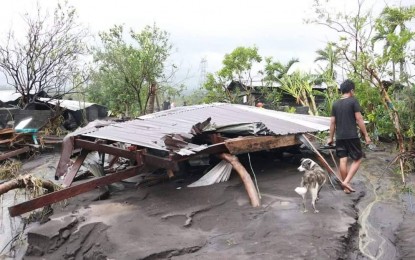News
226 public schools damaged by ‘Rolly’: DepEd

In its situation report issued on Tuesday, the damaged schools are under 26 divisions in Regions 1, 2, 4-A (Calabarzon), 4B (Mimaropa), 5 (Bicol), 8 (Eastern Visayas), and Cordillera Administrative Region. (Photo courtesy of PIA Region 5 via PNA)
MANILA – The Department of Education (DepEd) on Tuesday reported that 226 public schools and 7,169 learning materials were damaged during the onslaught of Super Typhoon Rolly (international name Goni).
In its situation report issued on Tuesday, the damaged schools are under 26 divisions in Regions 1, 2, 4-A (Calabarzon), 4B (Mimaropa), 5 (Bicol), 8 (Eastern Visayas), and Cordillera Administrative Region.
“In these regions, the number of totally damaged classrooms is 138, the number of classrooms with major partial damage is 289, and the number of classrooms with minor partial damage is 609,” the DepEd said.
It added that the estimated cost for the reconstruction and rehabilitation for these damaged infrastructures is PHP489.
5 million.
The DepEd also reported that 14,999 learners sought refuge in public schools that were used as evacuation centers.
The 869 public schools or 4,367 classrooms being used as evacuation centers are in the National Capital Region and Regions 1, 2, 3, 4-A, 4-B, 5 and 8.
Apart from activating its Disaster Risk Reduction and Management Service (DRRMS) Teams in the exposed and affected divisions and regions, the DepEd has directed its field offices to closely coordinate with local government units for local inter-agency actions since October 31.
The DepEd also attended online press conferences on the preparedness measures and response plan for “Rolly” with the National Disaster Risk Reduction and Management Council member agencies and participated in the Response Cluster emergency meeting.
The DepEd DRRMS said it will mobilize its engineers and coordinators for assessment and validation of infrastructure and non-infrastructure damages for response, rehabilitation and recovery interventions while deploying necessary response interventions to affected areas.





















